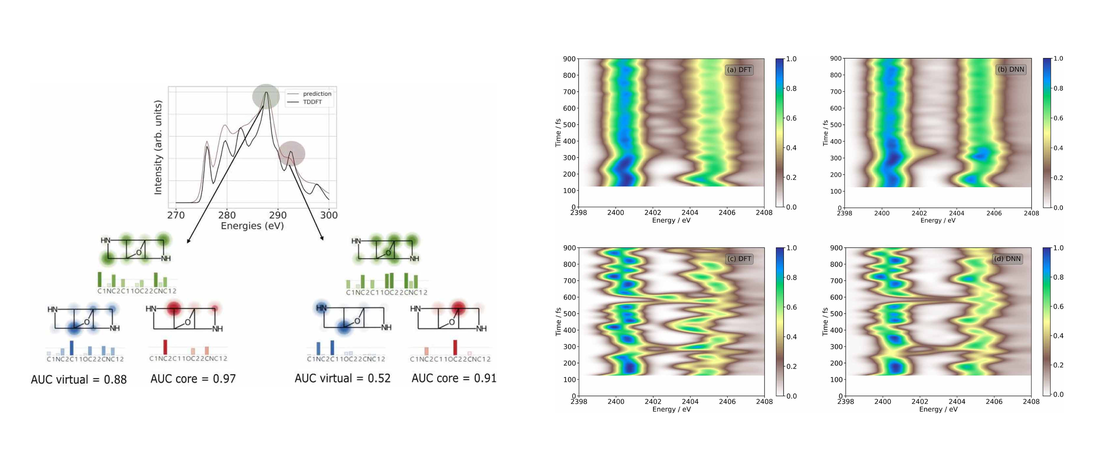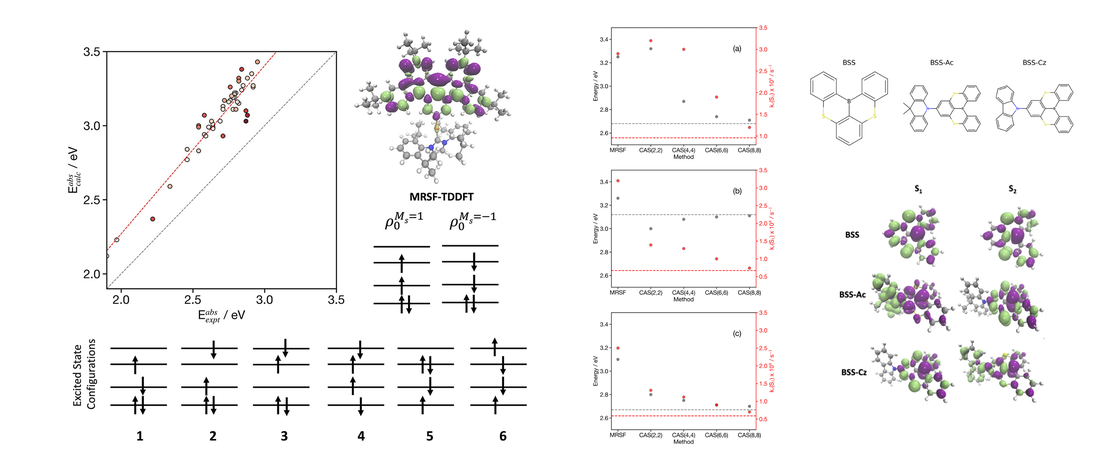
Monitoring the Evolution of Relative Product Populations at Early Times during a Photochemical Reaction
- Joao Pedro Figueira Nunes, Lea Maria Ibele, Shashank Pathak... and Basile F. E. Curchod
- Publication
- February 5, 2024
Abstract:
Identifying multiple rival reaction products and transient species formed during ultrafast photochemical reactions and determining their time-evolving relative populations are key steps toward understanding and predicting photochemical outcomes. Yet, most contemporary ultrafast studies struggle with clearly identifying and quantifying competing molecular structures/species among the emerging reaction products. Here, we show that mega-electronvolt ultrafast electron diffraction in combination with ab initio molecular dynamics calculations offer a powerful route to determining time- resolved populations of the various isomeric products formed after UV (266 nm) excitation of the five-membered heterocyclic molecule 2(5H)-thiophenone. This strategy provides experimental validation of the predicted high (∼50%) yield of an episulfide isomer containing a strained three-membered ring within ∼1 ps of photoexcitation and highlights the rapidity of interconversion between the rival highly vibrationally excited photoproducts in their ground electronic state.
Full Author List:
Joao Pedro Figueira Nunes, Lea Maria Ibele, Shashank Pathak, Andrew R. Attar, Surjendu Bhattacharyya, Rebecca Boll, Kurtis Borne, Martin Centurion, Benjamin Erk, Ming-Fu Lin, Ruaridh J. G. Forbes, Nathan Goff, Christopher S. Hansen, Matthias Hoffmann, David M. P. Holland, Rebecca A. Ingle, Duan Luo, Sri Bhavya Muvva, Alexander H. Reid, Arnaud Rouzée, Artem Rudenko, Sajib Kumar Saha, Xiaozhe Shen, Anbu Selvam Venkatachalam, Xijie Wang, Matt R. Ware, Stephen P. Weathersby, Kyle Wilkin, Thomas J. A. Wolf, Yanwei Xiong, Jie Yang, Michael N. R. Ashfold, Daniel Rolles and Basile F. E. Curchod
Additional Resources
DOI: 10.1021/jacs.3c13046
Bibtex:
@article{fig24monitoring,
author = {Figueira Nunes, Joao Pedro and Ibele, Lea Maria and Pathak, Shashank and Attar, Andrew R. and Bhattacharyya, Surjendu and Boll, Rebecca and Borne, Kurtis and Centurion, Martin and Erk, Benjamin and Lin, Ming-Fu and Forbes, Ruaridh J. G. and Goff, Nathan and Hansen, Christopher S. and Hoffmann, Matthias and Holland, David M. P. and Ingle, Rebecca A. and Luo, Duan and Muvva, Sri Bhavya and Reid, Alexander H. and Rouzée, Arnaud and Rudenko, Artem and Saha, Sajib Kumar and Shen, Xiaozhe and Venkatachalam, Anbu Selvam and Wang, Xijie and Ware, Matt R. and Weathersby, Stephen P. and Wilkin, Kyle and Wolf, Thomas J. A. and Xiong, Yanwei and Yang, Jie and Ashfold, Michael N. R. and Rolles, Daniel and Curchod, Basile F. E.},
title = {Monitoring the Evolution of Relative Product Populations at Early Times during a Photochemical Reaction},
journal = {Journal of the American Chemical Society},
volume = {146},
number = {6},
pages = {4134-4143},
year = {2024},
doi = {10.1021/jacs.3c13046},
URL = {https://doi.org/10.1021/jacs.3c13046},
eprint = {https://doi.org/10.1021/jacs.3c13046}
}


